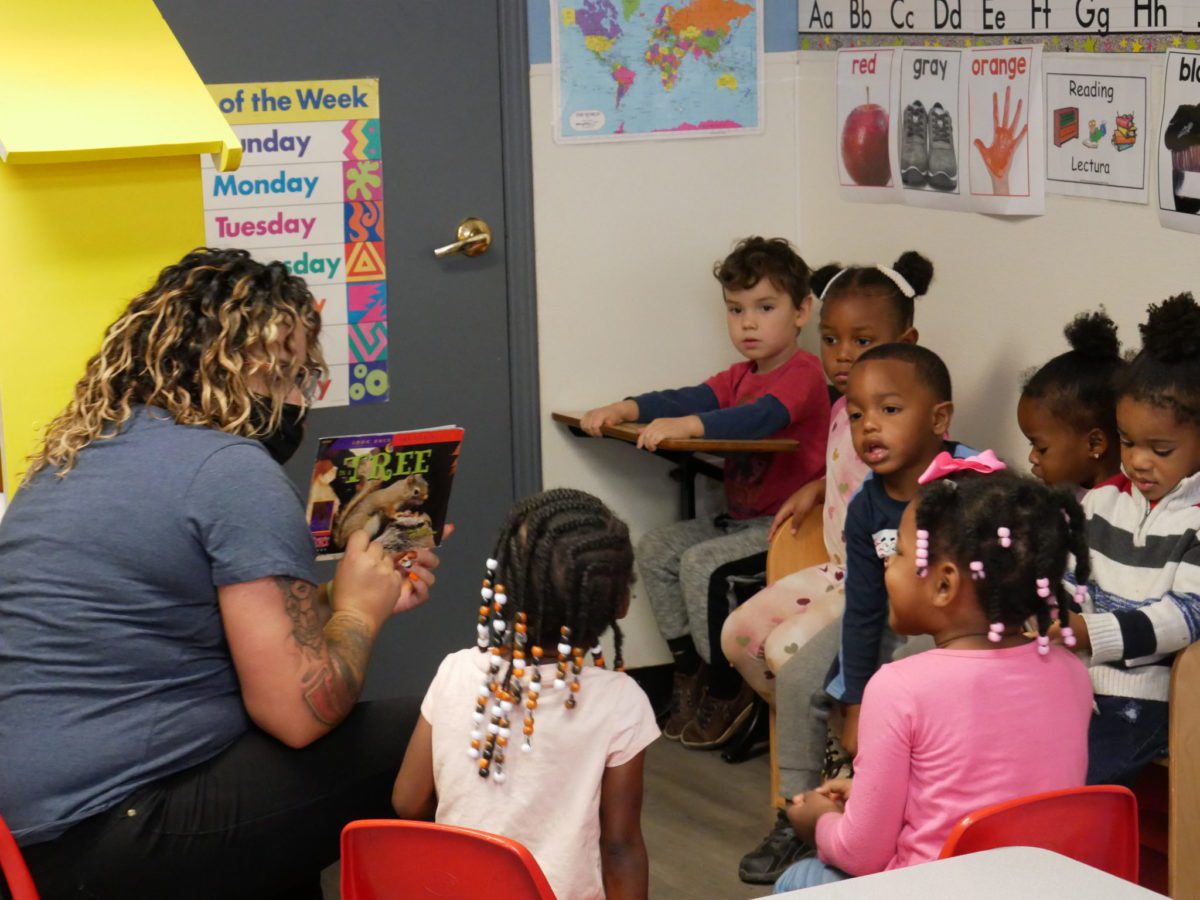
|
|
Researchers on a nine-month listening tour across 34 North Carolina counties recently asked parents and providers what they need and desire from early care and education. Some common themes arose in the answers: availability, affordability, and trust.
Care and Learning (CandL), a coalition of organizations pushing for a more publicly funded system of early care and education, this week released lessons from the tour, which was funded by private philanthropy.
“We can make assumptions all day long about what we think the families in North Carolina need or want in terms of raising whole, healthy children,” said Devonya Govan-Hunt, a CandL leader and executive director of the Charlotte affiliate of the National Black Child Development Institute. “This is an opportunity to hear exactly from their mouths and their own words, so that we are fighting for the right things.”
The research will inform a years-long policy campaign. CandL is funded by Blue Cross Blue Shield of North Carolina Foundation, ChildTrust Foundation, and Dogwood Health Trust. There were 514 people who participated in the tour: 302 parents and caregivers and 212 child care providers. Thirty-seven percent identified as Black, 24% as white or “not part of the BIPOC community,” 16% as Hispanic or Latinx, and 6% as indigenous, a person of color, multiracial, or Asian.
Researchers from The Link Group, a research consultancy, presented the lessons Tuesday in a virtual meeting, discussing how respondents defined quality and the barriers that are keeping families, programs, and communities from that quality. Here are three takeaways.
There is a lack of centralized and meaningful information on families’ options. The current child care rating system favors those with resources, respondents said.
When it comes to choosing a child care option that works for their family, respondents said they did not know where to look.
The state’s star rating system rates licensed child care programs on a scale of one to five, and it’s meant to be a useful indicator of quality. But parents said they either were unaware of the scale or did not use it as an indicator of trust. They were more likely to rely on word of mouth or Google reviews, the researchers said.
The system is based on staff education and program standards. Some respondents in the research said the scale is inequitable, because it rewards those with greater access to resources. A program’s star rating determines its ability to accept public subsidies and host NC Pre-K classrooms.
“We don’t get the star ratings to keep our rates low so all parents can afford us,” said an anonymous provider in Forsyth County.
“How are we going to remain a five-star day care when we can’t keep the staff and can’t pay them?” a Richmond County provider asked.
Providers said the state should create incentives for programs with high ratings to accept public vouchers or serve children with a range of socioeconomic backgrounds. And they said programs need support and funding to earn more stars.
Parents said trust with a provider is built on passionate, loving, and well-trained teachers; diversity and representation in programs in terms of race and ethnicity, culture, and language; and reliability and consistency. Respondents said trust is often strongest in home-based and kin care settings.
The lack of centralized information came up when parents were asked about their experiences with child care subsidies as well. Especially if families speak a language other than English, respondents said they did not know where to find eligibility information. Providers brought up the same concern.
“Everyone is using tech, but no one is using one central place for everything,” one Cumberland County provider said. “If we had that, it would make it easier for parents to find options for whatever their needs are.”
The options are slim.
Even when parents do understand what’s available, it’s often not a pretty picture.
Affordability is the biggest barrier, the researchers said.
“We heard that the cost of child care means that parents often decide not to work in order to provide their own child care,” said Laura Bayzle, a partner with The Link Group.
Some are proud of that decision, but many felt they had no choice, Bayzle said.
“The cost of childcare is so high,” said one parent in Durham County. “It’s hard to piece it together when my income isn’t consistent. I have people that can pitch in, which I am grateful for. It’s really hard to just go to an interview. How are you supposed to get a job when you don’t have care?”
Respondents said they weren’t as financially independent as they’d like to be because of the high cost of child care, and said they sacrificed other bill payments or career goals because of a lack of affordable child care.
Some parents said they were just a few dollars over the eligibility for public subsidies, or did not know how to find employment — a requirement for the state’s subsidy program — without child care.
Respondents who did access subsidies said it was still hard to pay the parent fees that aren’t covered.
Those high costs are mainly driven by the labor-intensive nature of the work, experts say.
Child care options also can be inaccessible because of their location, their hours, or their lack of language match, respondents said.
Parents need more help from the state to afford child care, and more parents should be eligible, respondents said. A grace period of unemployment could help more parents access those subsidies. More programs should take vouchers, and the state should allow vouchers to be used for in-home or kin care settings, respondents said.
Low teacher supports are exacerbating access issues.
Providers who responded on the tour said they were struggling to keep teachers because they couldn’t pay competitive wages. They expressed particular concern about their financial model as federal stabilization grants run out.
Increased wages, mental health supports, trainings, and comparable benefits to K-12 teachers are needed, respondents said.
Providers understand that turnover and inconsistency affect families’ trust, researchers said. “Many in-home providers often forgo their own medical needs because it would otherwise mean having to close for the day,” one slide in the researchers’ presentation said.
Staffing shortages drive long waitlists in communities, researchers said, reducing parents’ access.
“Parents and providers feel the waiting lists create a sense of competition and elitism among centers: The more highly valued centers have the long wait lists, which means they can charge more,” the presentation said.
More state funding is needed for existing programs to retain staff and remain open, and for the creation of new programs to meet families’ needs, respondents said.
“Every child care provider I know has a second job, so they aren’t getting paid enough,” said an anonymous parent in Buncombe County. “Our society is missing the public investment in ECE (early childhood education).”
Editor’s note: The Blue Cross and Blue Shield of North Carolina Foundation, ChildTrust Foundation, and Dogwood Health Trust are supporters of EducationNC.




